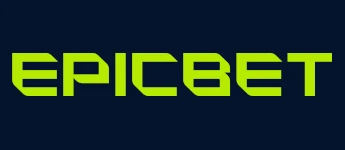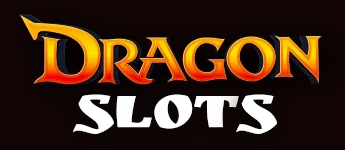 August 10 2024
August 10 2024
Improving poker hand analysis skills is crucial for any serious player looking to gain an edge in the game. This involves not only knowing hand rankings and their probabilities but also understanding how to apply this knowledge strategically during gameplay.
Poker hands are ranked from highest to lowest, with the Royal Flush as the highest, followed by Straight Flush, Four-of-a-Kind, Full House, Flush, Straight, Three-of-a-Kind, Two Pair, One Pair, and High Card. The odds of achieving these hands vary greatly. For instance, the probability of receiving a Royal Flush is 649,739 to 1. In contrast, the chance of obtaining a Straight Flush stands at 72,192 to 1, and landing a Four-of-a-Kind is calculated at 4,165 to 1.
Knowledge of these probabilities is essential for making informed decisions during gameplay, helping players decide when to fold, call, or raise.
Practical insights into the importance of skill and strategy in poker games can be gleaned from documented scenarios. Chris Moneymaker's victory in the 2003 World Series of Poker serves as a notable example. Moneymaker's win is often cited as a case where understanding probabilities and strategic play can triumph over sheer luck. His success highlighted that while poker does involve an element of chance, those who can effectively analyze hands and make strategic decisions are more likely to succeed in the long run.
Research highlights that comprehending the relative value of poker hands in order alongside their absolute value is fundamental. For example, a hand like two pair might seem strong initially, but its value can decrease significantly if opponents are likely to hold a straight or flush. Conversely, a single pair can maintain its strength depending on the opponent's actions and suggested hand strength. This contextual understanding of hand value is crucial for developing a sound poker strategy.
Statistics play a critical role in forming this strategy. For instance, the probability of being dealt pocket Aces is 220 to 1, while the odds of being dealt any pocket pair stand at 16 to 1. These statistical insights provide a solid empirical basis for decision-making during gameplay. Experienced players often emphasize the strategic advantage of aggression and calculated risk-taking, a mindset geared toward maximizing winning opportunities while managing potential risks.

Thoroughly reviewing and analyzing one's own hands is fundamental to improving hand analysis skills. This process involves scrutinizing hand histories and critically evaluating decisions made during play. Utilizing tools such as poker tracking software can facilitate this by offering detailed statistics and visual representations of play patterns. Identifying recurring patterns and mistakes through this method allows players to make strategic adjustments, ultimately enhancing their gameplay.
Studying poker strategy books remains an essential technique for players looking to deepen their understanding of the game. Books authored by experienced players and theorists provide deep insights into various aspects of poker. For instance, Nolan Dalla's list of pivotal poker strategy books includes works such as The Theory of Poker by David Sklansky and Harrington on Hold 'em by Dan Harrington. These texts explain fundamental concepts, including pot odds, implied odds, and hand ranges, all of which are critical for building a robust analytical foundation.
Recent advancements in technology have introduced AI as a pivotal element in poker hand analysis. AI tools can simulate millions of hands and devise optimal strategies for varied scenarios. The match between Phil Galfond and an AI system powered by GPT-4 exemplifies AI's capabilities in hand analysis. Players can leverage AI-driven software to gain insights into their play and learn from AI-developed strategies, providing a significant edge in understanding complex game scenarios.
Engaging with poker forums and discussion groups can further enhance hand analysis skills. Such platforms enable players to share hand histories, receive feedback, and learn from collective experiences. Websites of poker communities serve as valuable resources for players to dissect hands and discuss strategies collaboratively. This exchange of ideas can yield new perspectives and strategies that individual players might not otherwise consider.
Understanding opponents' tendencies and bluffing techniques is an integral part of hand analysis. AI has advanced to execute bluffs with precision, often surpassing human capability. Players can refine their bluffing strategies by studying AI's bluffing tactics. Analyzing opponents' betting patterns, timing, and psychological cues helps in making more informed decisions.
Consistent practice and regular play are indispensable for honing poker hand analysis skills. Practical knowledge enables players to apply theoretical knowledge and refine decision-making processes. Online poker platforms provide convenient access to a large volume of hands and facilitate the necessary practice for skill improvement. Combining consistent practice with reviewing hand histories and studying strategic concepts forms a comprehensive approach to mastering poker hand analysis.
Improving poker hand analysis skills requires a combination of theoretical knowledge, practical application, and the use of advanced tools. By integrating statistical data, community insights, and AI-driven tools, players can systematically analyze hands and refine their gameplay.
Engaging with poker strategy books, participating in online forums, and consistently practicing on digital platforms are essential steps toward becoming a more skilled and strategic player. As poker continues to evolve, those who invest in developing their analytical skills will find themselves better equipped to navigate the complexities of the game, ultimately improving their chances of success.


Curacao-License


Curacao-License


Curacao-License


Curacao-License


Curacao-License
 There is a No Deposit Bonus available: 25 Free Spins
There is a No Deposit Bonus available: 25 Free Spins


Curacao-License
 There is a No Deposit Bonus available: 30 Free Spins
There is a No Deposit Bonus available: 30 Free Spins


Curacao-License
 There is a No Deposit Bonus available: 15 Free Spins
There is a No Deposit Bonus available: 15 Free Spins


Malta-License (EU)


Curacao-License
 There is a No Deposit Bonus available:
25 Free Spins
There is a No Deposit Bonus available:
25 Free Spins


Curacao-License


Curacao-License



Curacao-License
 There is a No Deposit Bonus available: 30 Free Spins
There is a No Deposit Bonus available: 30 Free Spins




Curacao-License
 There is a No Deposit Bonus available: 25 Free Spins
There is a No Deposit Bonus available: 25 Free Spins


Malta-License (EU)